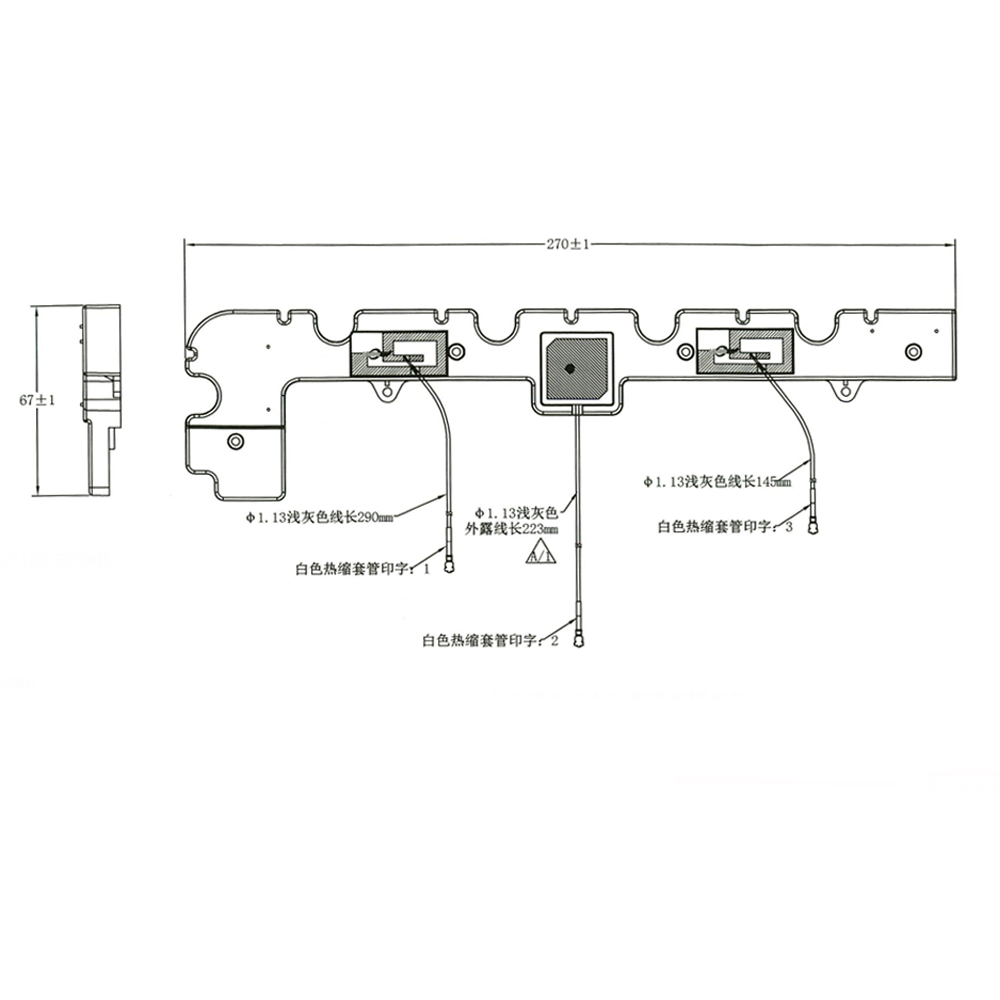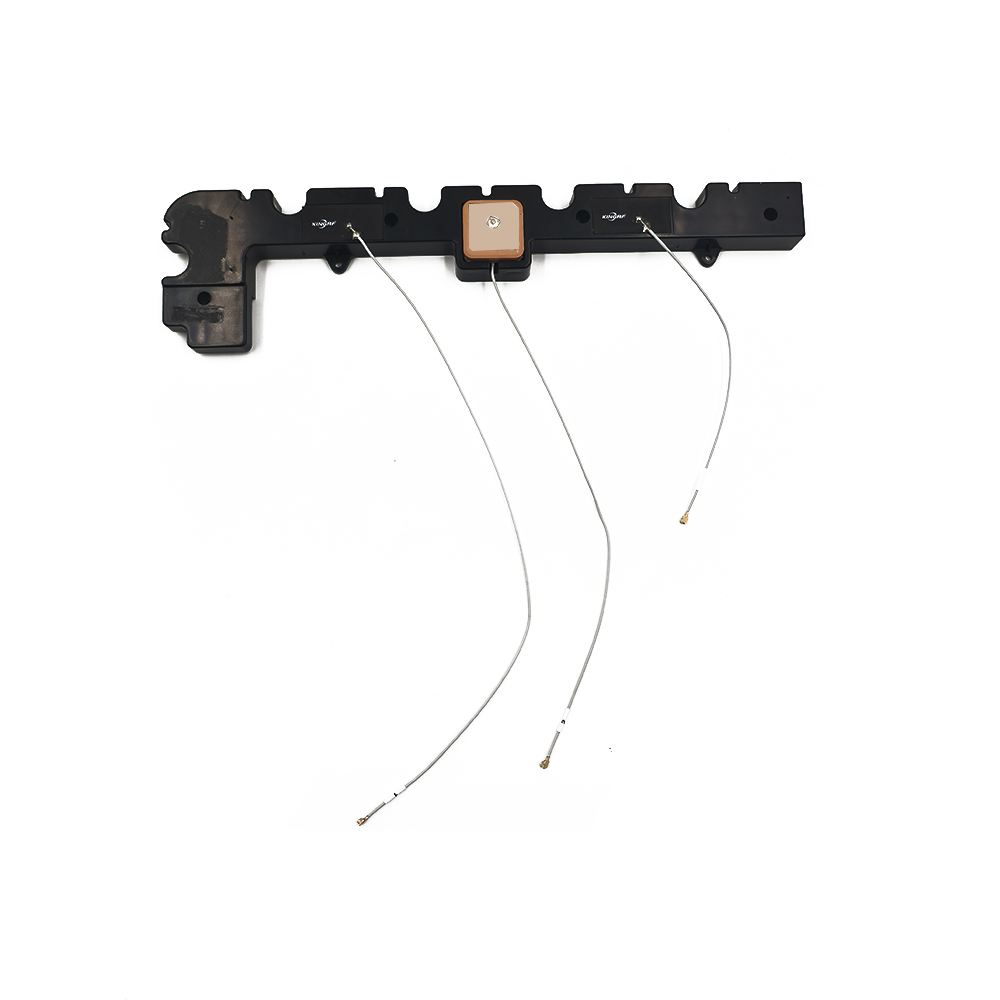Applications
GPS WiFi combo antennas for vehicle tracking have a wide range of applications across various industries. In the logistics and transportation industry, they are used for fleet management. Fleet managers can monitor the location, speed, and route of their vehicles in real - time, allowing them to optimize routes, reduce fuel consumption, and improve delivery schedules. They can also track the status of cargo, ensuring its safety and timely delivery. For example, a shipping company can use the antenna to track the location of its trucks carrying valuable goods, ensuring that they are on schedule and taking the most efficient routes.
In the automotive rental and leasing industry, these antennas are used for vehicle tracking and security. Rental companies can track the location of their vehicles at all times, ensuring that they are not being misused or stolen. In case of theft, the accurate positioning information provided by the antenna enables the recovery of the vehicle. Additionally, the antenna can be used to monitor the driving behavior of renters, such as speed and harsh braking, which can help in assessing the risk and improving the safety of the rental fleet.
The GPS WiFi combo antenna also has applications in the public transportation sector. Buses and trains can be equipped with these antennas to provide real - time location information to passengers, improving the transparency and reliability of public transportation services. Transit authorities can also use the tracking data to optimize the scheduling and routing of vehicles, reducing waiting times and improving the overall efficiency of the transportation network.
Future Trends
Looking ahead, several future trends are expected to shape the development of GPS WiFi combo antennas for vehicle tracking. One trend is the further miniaturization of these antennas. As technology advances, new materials and manufacturing techniques, such as nanotechnology and 3D printing, will be explored to reduce the size of the antennas without sacrificing performance. This miniaturization will enable easier integration of the antennas into vehicles, especially those with limited space, such as compact cars or electric vehicles. It may also lead to the development of more sleek and aerodynamic antenna designs that have less impact on the vehicle's appearance and performance.
The integration of artificial intelligence (AI) and machine learning (ML) algorithms with GPS WiFi combo antennas is an emerging trend. AI and ML can be used to optimize the performance of the antennas in real - time. These algorithms can analyze the received signals, detect changes in the signal environment, and adjust the antenna's operation parameters, such as gain, filtering, and interference mitigation, to adapt to different conditions. For example, AI can be used to predict and mitigate the effects of interference, improving the accuracy of GPS positioning and the reliability of WiFi communication. AI and ML can also be used to analyze the tracking data, providing valuable insights for fleet management, such as predicting vehicle maintenance needs or optimizing route planning based on historical traffic patterns.
Advancements in communication technologies, such as the development of 5G and the expansion of the Internet of Things (IoT), will also impact the design and use of GPS WiFi combo antennas. 5G offers faster data transfer rates, lower latency, and greater network capacity, which can significantly enhance the performance of vehicle tracking systems. GPS WiFi combo antennas will need to be designed to be compatible with 5G networks, enabling even more real - time and accurate tracking. The growth of the IoT will also lead to the integration of more sensors and devices in vehicles, and the GPS WiFi combo antenna will play a crucial role in enabling communication and data transfer between these devices, creating a more connected and intelligent transportation ecosystem.
There is also a growing trend towards the development of multi - functional antennas that integrate additional functions, such as Bluetooth, cellular communication, or sensor integration. Future GPS WiFi combo antennas may incorporate these additional functions, further simplifying the design of vehicle tracking systems and providing more comprehensive connectivity and functionality. For example, an antenna that also integrates Bluetooth can be used for short - range communication with other devices in the vehicle, such as smartphones or wearables, enhancing the user experience and enabling new applications.
Conclusion
GPS WiFi combo antennas have become an essential component in the field of vehicle tracking, offering a comprehensive solution that combines accurate positioning with seamless wireless communication. Their ability to provide real - time location information and enable data transmission has transformed the way vehicles are monitored and managed across various industries.
However, challenges such as interference management, power consumption, and compatibility need to be addressed to further improve their performance and widespread adoption. As technology continues to evolve, future trends such as miniaturization, the integration of AI and ML, advancements in communication technologies, and the development of multi - functional antennas offer great potential for enhancing the capabilities of GPS WiFi combo antennas for vehicle tracking. By overcoming these challenges and embracing these trends, these antennas will continue to play a vital role in enabling more intelligent, secure, and efficient vehicle tracking systems, contributing to the future of the transportation industry.




































































 Language
Language
 En
En Cn
Cn Korean
Korean

 Home >
Home > 







 18665803017 (Macro)
18665803017 (Macro)













